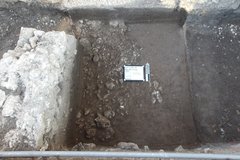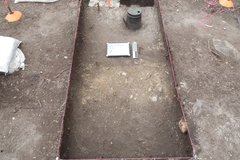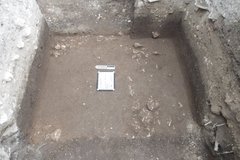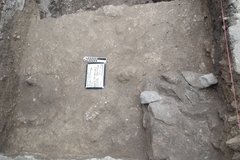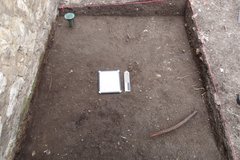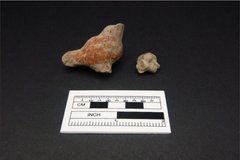During this week, five excavation units were active: EUs 2 and 2b, 4, 6, and 10.
Excavations were completed in EU-2 on Tuesday and archaeologists completed all final documentation, to include photos and mapping, by Wednesday afternoon. As in previous units, hand excavation of EU-2 was terminated at 150 cm below surface (five feet). This depth is to protect archaeologists from any potential soil wall collapse. While there were multiple intentional surfaces encountered in this unit, the most prominent feature was Feature 3, a limestone alignment. After approval from the Texas Historical Commission (THC), archaeologists began an adjacent unit in order to delineate Feature 3. This is important as the limestone alignment is in the path of the future drainage system. The adjacent unit is EU-2b.
EU-2b measures 2m long and 1m wide. It is adjacent to the southern boundary of EU-2. The goal of the unit is to delineate Feature 3 and to gather as much date about the feature as possible. Archaeologist began excavation of the unit on Thursday and by the end of the week were able to reach a depth of 30 cm below surface. Artifacts in these higher soil layers included ceramic sherds, metal fragments, and glass.
Archaeologists in EU-4 worked very efficiently and completed excavation of the unit by the end of the week. The terminal depth for hand excavation was 150 cm below surface. The final soil layer was devoid of cultural material and consisted of the same type of clay loam seen in the adjacent units. Archaeologists will complete final documentation next week.

